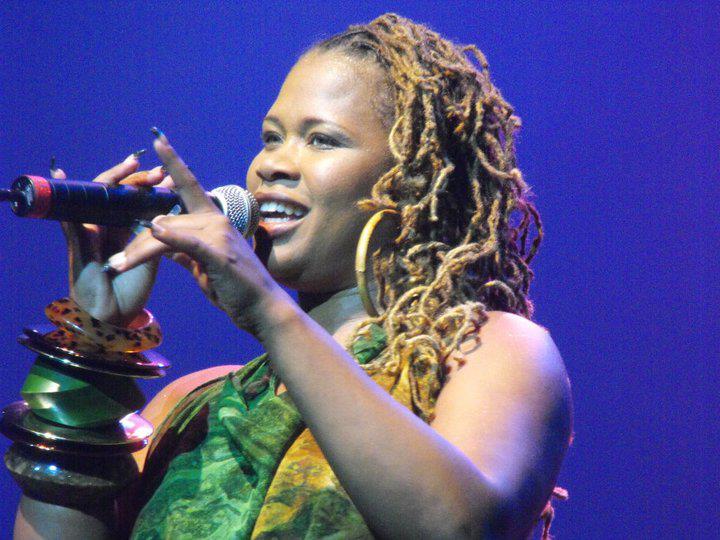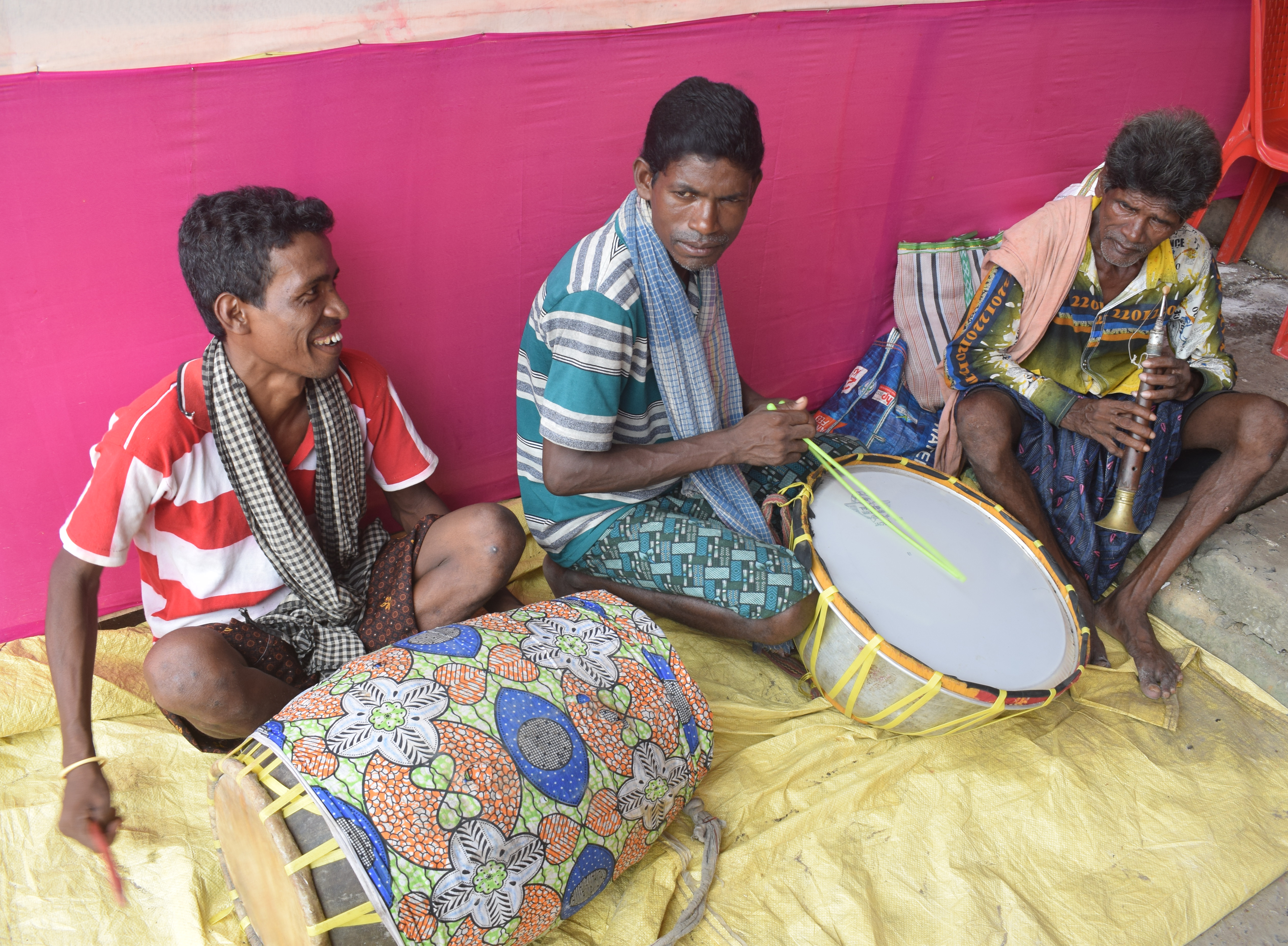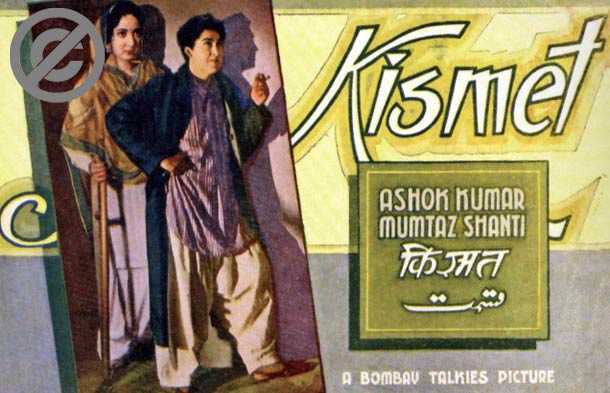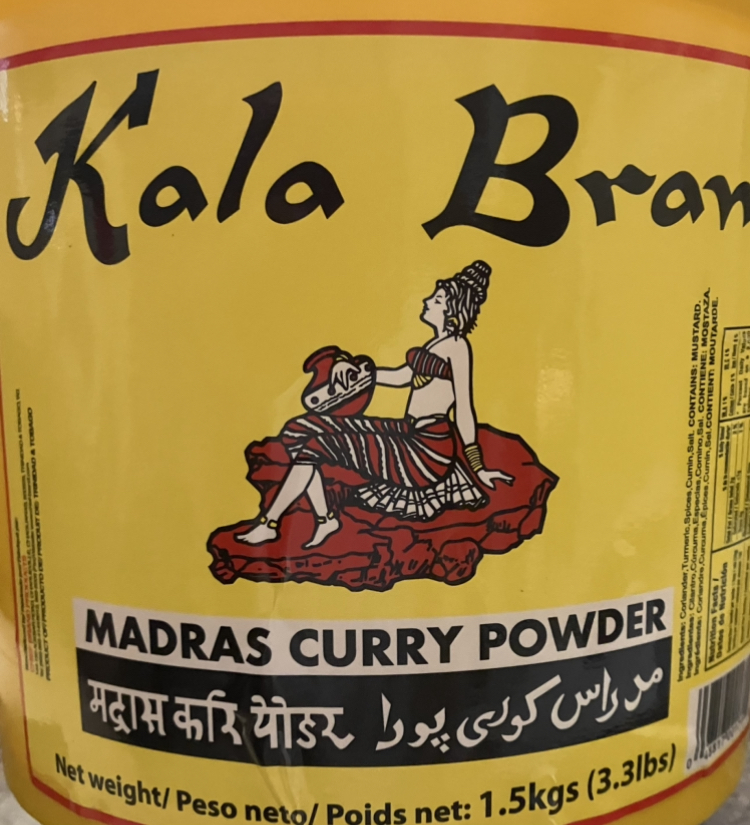|
Chutney Soca
In Trinidad and Tobago, Guyana, and Suriname, chutney soca music is a Crossover music, crossover style music style that blends Soca music, soca and Calypso music, calypso with chutney music—a genre rooted in Indo–Trinidadians and Tobagonians, Indo-Trinidadian culture.It incorporates English language, English, Caribbean Hindustani, Hindustani, and Hinglish lyrics, usingWestern instruments such as the guitar, piano, drum set, and Indian instruments such as the dholak, Pump organ, harmonium, tabla, and dhantal. The term chutney soca was first coined by Drupatee Ramgoonai of Trinidad and Tobago in 1987 in her first album entitled ''Chutney Soca'', with a mix of Trinidadian English and Caribbean Hindustani#Trinidadian Hindustani, Trinidadian Hindustani versions of the songs. The current style of spelling of the term was not established then and she spelt it as "Chatnee Soca". The following year her hit "Roll up de Tassa" was instrumental in creating a commercial market for this ty ... [...More Info...] [...Related Items...] OR: [Wikipedia] [Google] [Baidu] |
Soca Music
Soca music, or the "soul of calypso", is a genre of music that originated in Trinidad and Tobago in the 1970s. It is considered an offshoot of Calypso music, calypso, with influences from Afro–Trinidadians and Tobagonians, Afro-Trinidadian and Indo–Trinidadians and Tobagonians, Indo-Trinidadian rhythms. It was created by Ras Shorty I (or Lord Shorty) in an effort to revive traditional calypso, the popularity of which had been declining amongst younger generations in Trinidad due to the rise in popularity of reggae from Jamaica and Soul music, soul and funk from the United States. From the 1980s onward, soca has developed into a range of new styles. Etymology "Soca" is a Blend word, portmanteau of the words "soul" and "calypso". The genre was defined by Lord Shorty as the "Soul of Calypso." The word was originally spelled s-o-k-a-h by Lord Shorty. In a 1979 interview with ''Carnival Magazine,'' Lord Shorty stated that he "came up with the name soca. I invented soca. And I ... [...More Info...] [...Related Items...] OR: [Wikipedia] [Google] [Baidu] |
Human Voice
The human voice consists of sound Voice production, made by a human being using the vocal tract, including Speech, talking, singing, Laughter, laughing, crying, screaming, shouting, humming or yelling. The human voice frequency is specifically a part of human sound production in which the vocal folds (vocal cords) are the primary sound source. (Other sound production mechanisms produced from the same general area of the body involve the production of Voicelessness, unvoiced consonants, Click consonant, clicks, whistling and whispering.) Generally speaking, the mechanism for generating the human voice can be subdivided into three parts; the lungs, the vocal folds within the larynx (voice box), and the articulators. The lungs, the "pump" must produce adequate airflow and air pressure to vibrate vocal folds. The vocal folds (vocal cords) then vibrate to use airflow from the lungs to create audible pulses that form the laryngeal sound source. The muscles of the larynx adjust the len ... [...More Info...] [...Related Items...] OR: [Wikipedia] [Google] [Baidu] |
Dholak
The ''dholak'' is a two-headed hand drum, a folk percussion instrument. The dholak is most commonly recognised in countries such as India, Pakistan, Bangladesh, Nepal and Sri Lanka, but can also be found amongst the Indo-Diaspora in countries such as Guyana, Suriname, Fiji, Trinidad and Tobago, South Africa and Mauritius. The dholak can be anywhere about 16" to 24" in length. It is widely used in ''qawwali'', ''kirtan'', ''bhajan'', ''Bhangra (music), bhangra'', ''Chutney music, chutney'', ''Baithak Gana, baithak gana'', ''Hindi film music'', ''lokgeet'' and various classical styles such as ''Hindustani classical music, Hindustani'', ''Carnatic music, Carnatic'' and ''trinidadian local classical / guyanese taan, Trinidadian local classical / Guyanese taan''. The drum has two different sized drumheads. There is a smaller drumhead that can be from 5.5 to 8 inches in diameter and is made for sharp notes while the bigger drumhead, which can be from 7.5 to 10 inches in diametre, is ma ... [...More Info...] [...Related Items...] OR: [Wikipedia] [Google] [Baidu] |
Hinglish
Hinglish is the macaronic hybrid use of English and Hindi.Salwathura, A. N.Evolutionary development of ‘hinglish’language within the indian sub-continent. ''International Journal of Research-GRANTHAALAYAH''. Vol. 8. No. 11. Granthaalayah Publications and Printers, 2020. 41-48. Its name is a portmanteau of the words ''Hindi'' and '' English''. In the context of spoken language, it involves code-switching or translanguaging between these languages whereby they are freely interchanged within a sentence or between sentences. In the context of written language, Hinglish colloquially refers to Romanized Hindi — Hindustani written in English alphabet (that is, using Roman script instead of the traditional Devanagari or Nastaliq), often also mixed with English words or phrases. The word ''Hinglish'' was first recorded in 1967.Lambert, James. 2018. A multitude of ‘lishes’: The nomenclature of hybridity. ''English World-wide'', 39(1): 25. Other colloquial portmanteau words ... [...More Info...] [...Related Items...] OR: [Wikipedia] [Google] [Baidu] |
Caribbean Hindustani
Caribbean Hindustani () is an Indo-Aryan language spoken by Indo-Caribbean people and the Indo-Caribbean diaspora. It is a koiné language mainly based on the Bhojpuri and Awadhi dialects. These Hindustani dialects were the most-spoken dialects by the Indians who came as immigrants to the Caribbean from India as indentured laborers. It is closely related to Fiji Hindi and the Bhojpuri-Hindustani spoken in Mauritius and South Africa. Because a majority of people came from the Bhojpur region in Bihar, Uttar Pradesh and Jharkhand, and the Awadh region in Uttar Pradesh, Caribbean Hindustani is most influenced by Bhojpuri, Awadhi and other Eastern Hindi- Bihari dialects. Hindustani ( Standard Hindi- Standard Urdu) has also influenced the language due to the arrival of Bollywood films, music, and other media from India. It also has a minor influence from Tamil and other South Asian languages. The language has also borrowed many words from Dutch and English in Surina ... [...More Info...] [...Related Items...] OR: [Wikipedia] [Google] [Baidu] |
English Language
English is a West Germanic language that developed in early medieval England and has since become a English as a lingua franca, global lingua franca. The namesake of the language is the Angles (tribe), Angles, one of the Germanic peoples that Anglo-Saxon settlement of Britain, migrated to Britain after its End of Roman rule in Britain, Roman occupiers left. English is the list of languages by total number of speakers, most spoken language in the world, primarily due to the global influences of the former British Empire (succeeded by the Commonwealth of Nations) and the United States. English is the list of languages by number of native speakers, third-most spoken native language, after Mandarin Chinese and Spanish language, Spanish; it is also the most widely learned second language in the world, with more second-language speakers than native speakers. English is either the official language or one of the official languages in list of countries and territories where English ... [...More Info...] [...Related Items...] OR: [Wikipedia] [Google] [Baidu] |
Indo–Trinidadians And Tobagonians
Indo–Trinidadians and Tobagonians or Trinidadian and Tobagonian Indians are people from Trinidad and Tobago whose ancestors are of Indo-Caribbean people, Indian origin that came from India and the wider Indian subcontinent, subcontinent beginning in 1845 during the period of colonization and Indian indenture system, indentureship. Indo–Trinidadians and Tobagonians are a subgroup of Indo-Caribbean people, which is a subgroup of the wider Non-resident Indian and person of Indian origin, Indian diaspora. Generally, most Indo-Trinidadians can trace their ancestry back to North India especially the Bhojpuri region, Bhojpur and Awadh regions of the Hindi Belt, which lies in the Indo-Gangetic Plain, Gangetic plains that is located between the Ganga and Yamuna rivers and faces the mountain ranges of the Himalayas, the Kaimur Range, Kaimur, and the Vindhyas. However, some Indo-Trinidadians may trace their ancestry to other parts of South Asia, notably South India. Indians first arrive ... [...More Info...] [...Related Items...] OR: [Wikipedia] [Google] [Baidu] |
Chutney Music
Chutney music ( Caribbean Hindustani: चटनी संगीत, 𑂒𑂗𑂢𑂲 𑂮𑂑𑂹𑂏𑂲𑂞, چٹنی موسیقی) is a genre that blends Hindustani folk music, including Bhojpuri folk traditions, with Caribbean calypso and soca rhythms and later filmi music. Originating in Trinidad and Tobago by Indo-Trinidadians in the mid-20th century, chutney music has reflected the history and experiences of indentured laborers hailing from the Indian subcontinent, particularly from present-day states like Bihar, Uttar Pradesh and Bengal, and their descendants. It is similar to Baithak Gana that originated in the South American nation of Suriname. The term ''chutney'' is derived from the Hindi word '' chatni,'' referring to South Asian condiments made of spices. Before the emergence of Caribbean Hindustani, early chutney music often featured lyrics sung in Hindi, Bhojpuri, Awadhi or other Indian languages, blended in with West Indian Creole and Caribbean E ... [...More Info...] [...Related Items...] OR: [Wikipedia] [Google] [Baidu] |
Calypso Music
Calypso is a style of Caribbean music that originated in Trinidad and Tobago from Afro-Trinidadians during the early- to mid-19th century and spread to the rest of the Caribbean Antilles by the mid-20th century. Its rhythms can be traced back to West African Kaiso and the arrival of French planters and their slaves from the French Antilles in the 18th century. It is characterized by highly rhythmic and harmonic vocals, and was historically most often sung in a French creole and led by a griot. As calypso developed, the role of the griot became known as a '' chantuelle'' and eventually, ''calypsonian''. As English replaced "patois" ( Antillean) as the dominant language, calypso migrated into English, and in so doing it attracted more attention from the government. It allowed the masses to challenge the actions of the unelected Governor and Legislative Council, and the elected town councils of Port of Spain and San Fernando. Calypso continued to play an important role in po ... [...More Info...] [...Related Items...] OR: [Wikipedia] [Google] [Baidu] |
Crossover Music
Crossover is a term applied to musical works or performers who appeal to different types of audiences. This can be seen, for example, when a song appears on two or more of the record charts, which track differing musical styles or genres. In some contexts, the term "crossover" can have negative connotations associated with cultural appropriation, implying the dilution of a music's distinctive qualities to appeal to mass tastes. For example, in the early years of rock and roll, many songs originally recorded by African-American musicians were re-recorded by white artists such as Pat Boone in a more toned-down style, often with changed lyrics, that lacked the hard edge of the original versions. These covers were popular with a much broader audience. Crossover frequently results from the appearance of the music in a film soundtrack. For instance, Sacred Harp music experienced a spurt of crossover popularity as a result of its appearance in the 2003 film '' Cold Mountain'', an ... [...More Info...] [...Related Items...] OR: [Wikipedia] [Google] [Baidu] |
Suriname
Suriname, officially the Republic of Suriname, is a country in northern South America, also considered as part of the Caribbean and the West Indies. It is a developing country with a Human Development Index, high level of human development; its economy of Suriname, economy is heavily dependent on its abundant Natural resource, natural resources, namely bauxite, gold, petroleum, and Agriculture, agricultural products. Suriname is a member of the Caribbean Community (CARICOM), the United Nations, the Organisation of Islamic Cooperation and the Organization of American States. Situated Tropics, slightly north of the equator, over 90% of its territory is covered by rainforest, List of countries by forest area (percentage), the highest proportion of forest cover in the world. Borders of Suriname, Suriname is bordered by the Atlantic Ocean to the north, French Guiana to the east, Guyana to the west, and Brazil to the south. It is List of South American countries by area, the smalles ... [...More Info...] [...Related Items...] OR: [Wikipedia] [Google] [Baidu] |
Guyana
Guyana, officially the Co-operative Republic of Guyana, is a country on the northern coast of South America, part of the historic British West Indies. entry "Guyana" Georgetown, Guyana, Georgetown is the capital of Guyana and is also the country's largest city. Guyana is bordered by the Atlantic Ocean to the north, Brazil to the south and southwest, Venezuela to the west, and Suriname to the east. With a land area of , Guyana is the third-smallest sovereign state by area in mainland South America after Uruguay and Suriname, and is the List of South American countries by population, second-least populous sovereign state in South America after Suriname; it is also List of countries and dependencies by population density, one of the least densely populated countries on Earth. The official language of the country is English language, English, although a large part of the population is bilingual in English and the indigenous languages. It has a wide variety of natural habitats and ... [...More Info...] [...Related Items...] OR: [Wikipedia] [Google] [Baidu] |







